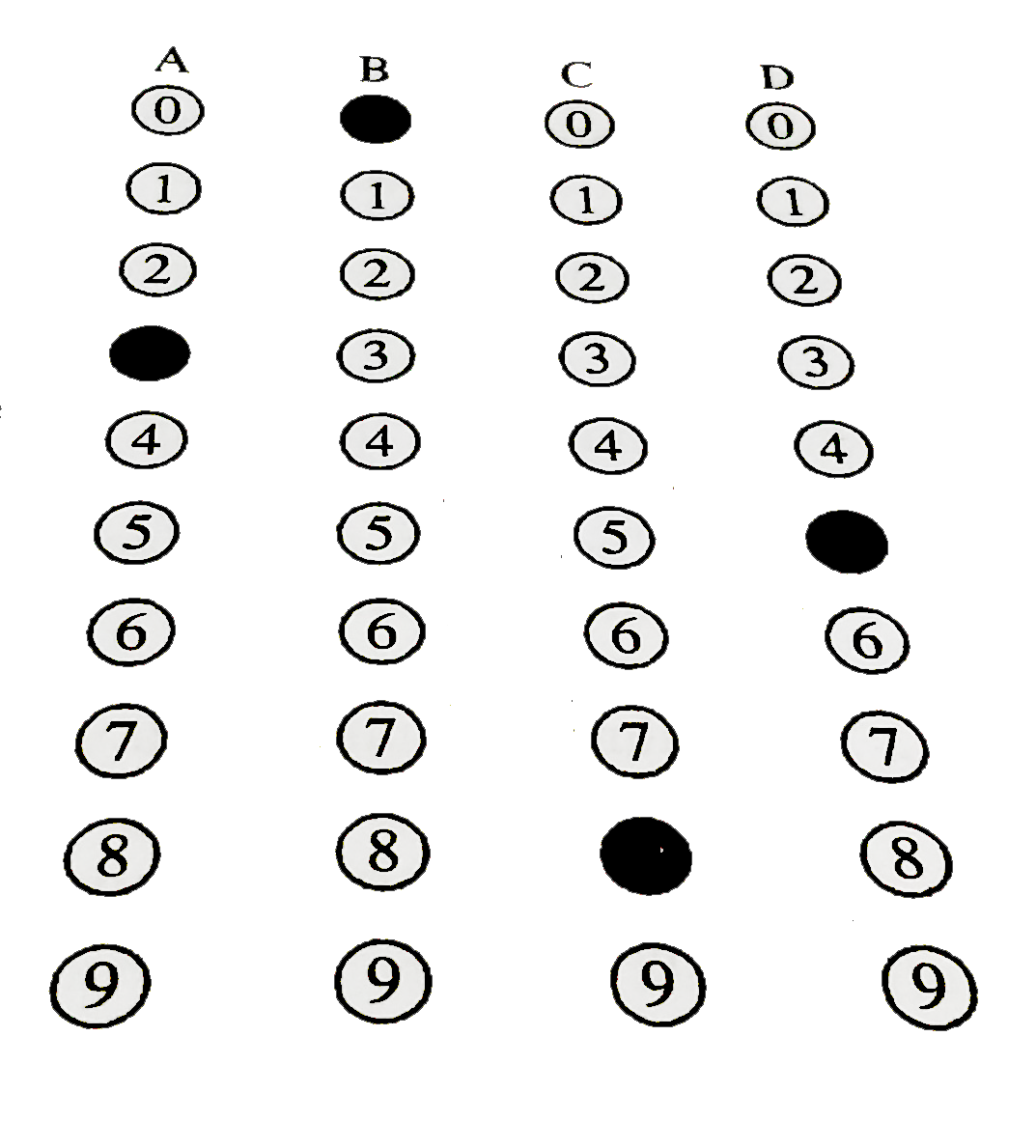The total number of ore of Cu from the following are ………..
Atacamite, Sphalertie, Ruby copper, Chalcanthite, Fool's gold, Chalcopyrite, Angelsite, Baryte, Chalcocite, Zincite.
The correct Answer is:5
Chalcopyrite, Chalcocite,
Ruby copper (Cu2O)
Atacamite [Ci2Cl(OH)3],
Chalcanthite [CuSO4.5H2O]
Similar Questions
Amongst the following , the total number of ores which may be concentrated by froth floatation process is : haematite, bauxite, galena, copper pyrites, sphalerite, cassiterite, calamine, argentite , chalocite.
View SolutionThe answer to each of the following questions is a single digit integer from 0 to 9. If the correct answer to the question number A,B, C and D say 3,0,8,5 respectively, then the correct darkening of bubbles should be as follow.

Amonst the following, the total number of ores, which can be concentrated by from floatation process haematite, bauxite, galena, copper pyrites, sphalerite caneterite, calamine, argentite, chalcorite.View Solution
Knowledge Check
- Question 1 - Select One
Copper is the most noble of first row transition metals and occurs in small deposits in serveral countries. Ores of copper include chalcanthite (CuSO4.5H2O), atacanite [Cu2Cl(OH)3], cuprite (Cu2O), copper glance (Cu2S), and malachite [Cu2(OH)2CO3]. However, 80% of the world copper production comes from the ore chalcopyrite (CuFeS2). The extraction of copper from chalcopyrite involves partial roasting, removal of iron and self-reduction.
Iron is removed from chalcopyrite as.AFeOBFeSCFe2O3DFeSiO3 - Question 2 - Select One or More
Copper is the most noble of the first transition metals and occurs in small deposits in several countries. Ores of copper include chalcanthite (CuSO4.5H2O), atacamite (Cu2Cl(OH)3), cuprite (Cu2O), copper glance (Cu2S) and malachite (Cu2(OH)2CO3). Howerver 80% of the world copper production comes from the ore chalcopyrites (CuFeS2) the extraction of copper from chalcopyrites involves partial roasting of iron and self reduction.
Q. Partial roasting of chalcopyrites with silica added to it, produces,AFeSiO3BFe2O3CCu2SDCuO - Question 3 - Select One
Copper is the most noble of the first row transition metals and occurs in small deposits in several countries. Ors of copper include chalcanthite (CuSO4.5H2O) , atacamite (Cu2Cl(OH)3), cuprite (Cu2O), copper glance (Cu2S) and malachite (Cu2(OH)2CO3). However , 80% of the world copper production comes from the ore chalcopyrite (CuFeS2). the extraction of copper from chalcopyrite involves partial roasting, removla of iron and self- reduction.
Iron is removed from chalcopyrite asAFeOBFeSCFe2O3DFeSiO3
Amongst the following, oxide ores are : calamine, fools's gold, cuprite zincite, chalcocite, haematite, bauxite, magnetite, cassiterite
View SolutionAmongst the following ores, the total number of oxide ores are:
Siderite, Magnetite, Haematite, Malachite, Zincite, CupriteView SolutionThe total number of metals that can be the best refined by liquation method from following - Copper, bismuth, silver, lead, gold, zinc, mercury ?
View SolutionCopper is the most noble of first row transition metals and occurs in small deposits in serveral countries. Ores of copper include chalcanthite (CuSO4.5H2O), atacanite [Cu2Cl(OH)3], cuprite (Cu2O), copper glance (Cu2S), and malachite [Cu2(OH)2CO3]. However, 80% of the world copper production comes from the ore chalcopyrite (CuFeS2). The extraction of copper from chalcopyrite involves partial roasting, removal of iron and self-reduction.
Partial roasting of chalcopyrite producesView SolutionCopper is the most noble of the first row transition metals and occurs in small deposits in several countries. Ores of copper include chalcanthite (CuSO4.5H2O) atacamite (Cu2Cl(OH)3),Cuprite (Cu2O) , copper glance (Cu2S) and malachite (Cu2(OH)2CO3). however 80% of the world copper production comes from the ore chalcopyrite (CuFeS2). the extraction of copper from chalcopyrite invovles partial roasting . removal of iron and self-reduction.
IF the 0.05 molar solution of M+ is replaced by a 0.0025 molar M+ solution. then the magnitude of the cell potential would beView Solution

